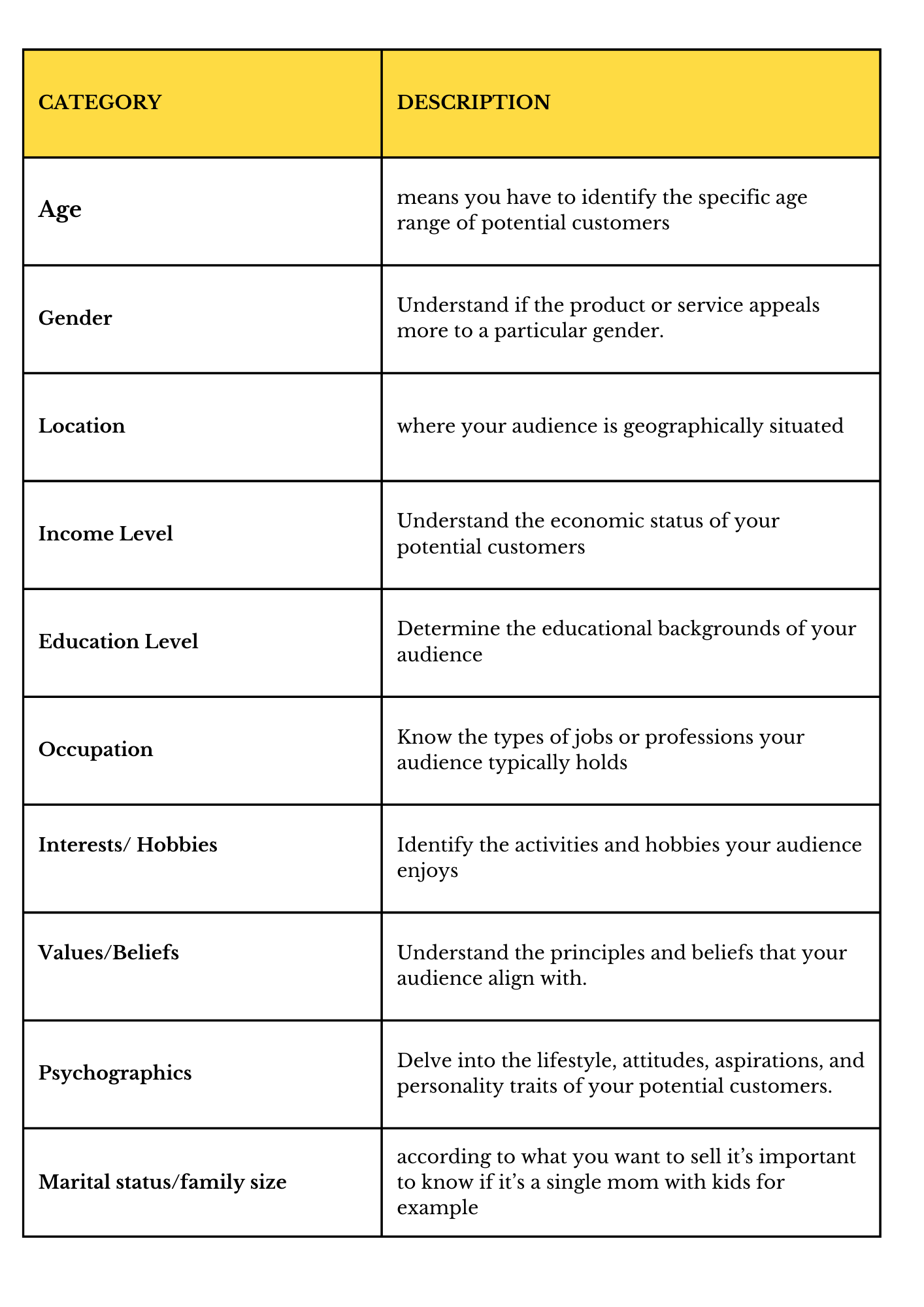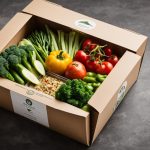You’re passionate about food and want to venture into the world of entrepreneurship. Starting a home-based food business online could be the perfect opportunity for you.
In today’s booming e-commerce era, the online food industry is on the rise. In 2025, 77.6% of the Canadian population should use e-commerce.
However, starting a home-based food business online can be daunting, especially if you need to become more familiar with the digital world.
That’s why we’ve put together this comprehensive guide to help you kickstart your small e-commerce business journey.
Conduct market research for your online home-based food business
Before diving into the world of e-commerce businesses conducting thorough market research is crucial.

Find your niche
Finding your niche can be an ingredient that you are passionate about, cacao, mushrooms… Recipes that your entourage loves, that you know people will enjoy.
If you don’t know yet, look for what people want and discover their pain points. Knowing what the frustrations of people in your area are should guarantee success.
Or you can look for ingredients and trendy recipes. It’s not only in fashion that trends exist!
The next tip can be a way to find your niche too.
Identify Your Target Audience
It’s essential to know your target audience. By knowing your audience you can tailor your content, have better communication, and build a relationship with your customers.
To know your target audience, start by researching the demographics:

Maybe you already have a specific target audience and just have to find the products they are looking for, and their pain points.
Now that you’ve identified a specific target audience; and know what you want to sell you have to consider the equipment.
Learn more about how to attract new customers.
Think about the equipment you need
You might need to invest in equipment. If you want to sell baked goods, for example, you probably need to buy more cooling racks, bench scrapers, baking cups or a new oven.
Choose the right e-commerce platform for your small business
Selecting the proper e-commerce platform is almost as much important they knowing what you want to sell. Nowadays you have a lot of platforms, before choosing one consider the following factors:
- Customization options: Look for platforms that allow you to customize the design, layout, and branding of your website. This ensures that your online store reflects your unique brand identity.
- Ease of use: Opt for a platform with a user-friendly interface and intuitive navigation. This makes it easier for you to manage your website and for customers to navigate and make purchases.
- Mobile responsiveness: Ensure that the platform you choose is mobile-friendly and provides a seamless shopping experience on smartphones and tablets. Most people use their phones to make queries like (…)near me.
- Inventory management: Evaluate the platform’s inventory management capabilities. It should allow you to easily track and update your inventory, ensuring you never run out of stock.
- Order fulfillment: Look for platforms that offer efficient order management and fulfillment features. This includes automated order processing, shipping integration, and tracking options.
The platform that you choose will be easy for you to use, facilitate your work and be user-friendly for your customers.
But don’t worry at FreshFind, we specialize in empowering home-based food businesses and retail industries with seamless online ordering and payment solutions.
Our tailored platforms enable entrepreneurs to effortlessly create their online storefronts or menus, manage real-time orders, and accept diverse payment methods securely.
With a user-friendly interface, small e-commerce businesses can customize menus, manage inventory efficiently, and foster stronger customer relationships through insightful data analysis.
We prioritize simplicity, reliability, and customer-centricity, helping businesses grow by reaching a wider audience and enhancing their operational efficiency without the complexity of integrations.
Crafting your business plan for your home-based food business: Setting Goals and Strategies
How do you develop a business plan for your small e-commerce business?
To develop your business plan for your home-based food e-commerce, you will need to:
- Set your goals.
- Define your target audience.
- Choose a business that is not already registered.
- Study our competitors.
- Establish your unique selling proposition.
- Create strategies for marketing.
- Budget all the expenses you will need to make for your business.
By setting these out, you can pursue your home-based food e-commerce with a clear understanding of what to expect and how to navigate the industry.
Another important step for your business plan is to consider your unique identity in the online food landscape. You need to develop your visual presence, such as a logo, website, and social channels that reflect your brand, your message and your potential customers.
Get the right price for your product
Pricing a product can be a daunted task! Here is some advice on how to do
1-Calculate Variable Costs:
- First, determine the cost per product unit, including materials, labour, packaging, shipping, and other variable expenses.
- Next, incorporate the value of your time spent creating the product.
2-Add Profit Margin:
- Now, decide on a profit margin percentage you want to earn on top of variable costs (e.g., 20%).
- Use this margin to calculate the selling price by dividing variable costs by (1 – profit margin as a decimal).
3-Consider Fixed Costs:
- Create an account for fixed expenses that remain constant regardless of the number of units sold: mobile plan, website plan, internet…
- Use a break-even analysis to understand how many units you need to sell to cover both variable and fixed costs. Thanks to break-even analysis you will know when your business will be profitable.
4-Additional Insights:
- Look into your competitor’s pricing. By researching your competitors’ prices, you will be able to ensure your pricing aligns with the market while reflecting the value of your product.
5-Product-Specific Pricing (e.g., Food Products):
- Many things can make a price vary. However, food pricing can vary based on uniqueness, quality, and the target market’s perception.
- Consider the value proposition of your food product while maintaining a balance between profit margins and customer perception.
6-Utilize Pricing Calculators:
- Many tools exist to help you determine profitable selling prices by factoring in costs and desired profit margins.
- Ultimately, pricing is a dynamic process that involves understanding costs, market demands, and customer behaviours to find a balance between profitability and market competitiveness.
Legal Requirements for home-based food business: Understanding food safety and licensing
You can’t start your small e-commerce business before knowing the requirements and regulations.
Learn more about this topic of license and permit.
Key Takeaways:
-
- Familiarize yourself with the legal requirements for e-commerce food businesses in Canada.
- Obtain the necessary licenses and permits for your specific location and type of food business.
- Register your business according to the regulations in your province or territory.
- Follow food safety regulations and implement proper hygiene practices.
- Register for Goods and Services Tax (GST) if your business operates in Alberta, British Columbia, Manitoba, Northwest Territories, Nunavut, Quebec, Saskatchewan, or Yukon. Alternatively, if you’re situated in Ontario, New Brunswick, Newfoundland Labrador, Nova Scotia, or Prince Edward Island, applying for Harmonized Sales Tax (HST) might be the right move for your business.
Get a business number(BN)
In Canada, you must have a business number to be able to sell goods or services. The BN must be obtained in the province or territory where your business is located, often you will need to renew your license every year.
Establishing Your Online Presence: Building a Strong Website and Social Media Strategy

Your online presence is the key to success in the digital age.
As a small e-commerce business, your website is your virtual storefront, and it must be compelling and optimized for maximum online visibility.
Here are some tips to help you establish a strong online presence:
Develop a Compelling Website
Your website must grab potential customers’ attention and convey your brand’s essence. You can do that by having an easy-to-navigate website, visually appealing, and optimized for search engine optimization (SEO).
- Choose a clean, professional design that aligns with your brand identity.
- Include high-quality visuals that showcase your products. With low-quality visuals, you will lose potential customers.
- Create clear and concise product descriptions, with pricing and delivery details.
- Ensure your website is mobile-responsive for optimal user experience, this point is crucial for local businesses.
- Use SEO techniques to optimize your website for search engines.
Implement an Effective Social Media Strategy
Social media is a powerful marketing tool that can help you build brand awareness, engage with your target audience, and drive traffic to your website.
Here are some tips to help you create an effective social media strategy:
- Create a content calendar that aligns with your business goals. This way your content will be well-organized and you can keep track of it.
- Share engaging content, such as behind-the-scenes glimpses. People like this kind of content, especially with local businesses.
- Don’t forget to share reviews too.
- Use relevant hashtags to increase the visibility of your posts.
- Engage with your audience by responding to comments and direct messages, every message good or bad.
How can you establish your online presence for your small e-commerce business?
How to promote your home-based food business:
- To establish a strong online presence, use platforms that your target audience utilizes. No need to be on every platform if your target audience doesn’t use it. You need to develop and maintain active social media profiles to engage with your audience.
- Another way is to collaborate with food influencers or guest bloggers on popular food platforms to expand your reach.
- You can also consider listing your business on online food platforms and directories to expand your reach.
Offering Deals and Freebies:
- To attract customers provide discount codes, vouchers, and free samples.
- Contact influencers and distribute free tasters of your products, to generate interest.
Cooking Education and Content Marketing:
- Engage customers by offering cooking classes or educational content related to your food products.
- Use content marketing strategies to enhance online visibility, such as blog posts, videos, or eBooks focused on food and recipes.
Online directories must have:
- List your brand in online directories to improve visibility like Google Business Profile, Yelp, Facebook, Yellow Pages… Pay attention, that your information ( Name, address, phone number, schedule…) is correct on every platform.
Build Your Brand
As a small e-commerce business owner, your brand identity is crucial for your success.
It has to be unique, recognizable, and consistent across all online platforms.
Here are some tips to help you establish and maintain a strong brand identity:
- Create a brand message that conveys the essence of your business, such as quality, convenience, or innovation.
- Design a logo that reflects your brand personality and is easy to recognize.
- Use your brand message and logo consistently across all online platforms, including your website and social media channels.
- Encourage customer engagement by responding to reviews and feedback, and addressing any concerns promptly.
Thanks to those tips, you can establish a strong online presence for your home-based food business, and attract and retain loyal customers.
Packaging part of your brand identity

The first encounter between your business and customers is often the package they receive.
You may underestimate packaging, but it holds immense value.
Have you ever seen unboxing videos or hauls on online platforms? Who hasn’t?
Packaging is part of your brand identity. A poorly packaged item can tarnish your reputation and diminish customer satisfaction.
Your brand identity extends beyond your website and social media presence—it encompasses your packaging. As your products and online platform aim to stand out, so should your packaging. You can use colours and design elements that echo your brand identity, and don’t forget your logo.
However, it’s not only about aesthetics; quality is paramount. Damaged orders can ruin all your hard work. Opting for high-quality packaging not only protects your products but also instills confidence in your customers, encouraging repeat purchases and fostering loyalty.
Personalized touches add another layer to customer retention. A simple thank-you note addressed to the customer by name can significantly enhance their connection to your brand, making them feel valued and appreciated.
Considering the growing environmental consciousness, employing eco-friendly practices in your packaging can be pivotal. By reducing plastic usage and incorporating recycled materials, you align your brand with the values of an increasingly environmentally aware consumer base. This not only helps retain customers but also addresses their concerns and frustrations regarding sustainability.
Creating an irresistible online menu for your small e-commerce business
Your online menu is your digital storefront. As you know first impressions are very important, even more so for businesses online. If the potential customers don’t like what they see, they will leave your online menu in a few seconds.
To create an irresistible online menu, begin by reflecting your brand’s personality in the design and messaging, and use only high-quality photos. It is important to convey the essence of your food offerings and story.
Top Tips for Creating an Online Menu
- Reflect your brand’s personality in design and messaging.
- Focus on designing a visually appealing and well-categorized menu.
- Use persuasive language and alluring photos to capture the customer’s attention.
- Strategically optimize the menu with relevant keywords that resonate with your target audience.
- Create an easy, personalized ordering process that prioritizes customer preferences.
- Ensure your menu is optimized for each online platform.
Managing suppliers and inventory is vital for your home-based food business
Find Suppliers
Selecting carefully your ingredients and products is essential for the success of your small e-commerce business. Also, a very important point is to build strong relationships with reliable suppliers to ensure that you can consistently deliver fresh and high-quality products to your customers.
Sourcing from local suppliers
As a small local business, you should partner with local suppliers. This partnership has numerous advantages:
- You will promote your business as eco-friendly by using as many as you can local suppliers: reducing transportation.
- People like to support the community, and you will show them that you do as well.
- Another advantage is that by choosing local you will reduce costs.
As said above, again choose carefully your local suppliers in your area who meet your quality standards and certifications. Then, establish robust communication and negotiate favourable pricing and delivery terms.
Implementing secure online payment systems

Online payment systems are a critical component of any e-commerce business, including your small e-commerce business.
To build trust and ensure customer satisfaction, you must offer your customers secure and seamless transactions.
Here are some essential payment systems to explore:
- Credit cards: Enable customers to pay with major credit cards such as Visa, and Mastercard…
- Debit cards: Accept payments from customers using their bank debit cards.
- Mobile wallets: Allow customers to use popular mobile payment apps like Apple Pay or Google Pay.
Online payment platforms: Integrate with platforms like PayPal or Stripe to offer additional payment options and ensure secure transactions.
Providing exceptional online support
Customer service is not just a buzzword – it’s a powerful tool for building customer loyalty and a strong online presence.
Here’s how to provide exceptional online support and streamline the food delivery process for a delightful customer experience.
Efficient Online Support
As a small e-commerce business, providing efficient support through digital channels is crucial to keeping your customers happy. Make sure to offer multiple support channels, such as email, phone, social media, and live chat, and respond to customer queries and complaints promptly.
Leveraging Digital Marketing Tools
Digital marketing tools such as email newsletters, social media campaigns, and personalized discounts can help enhance customer engagement and loyalty. Regularly update your customers on your latest offerings, menu updates, and promotions to keep them engaged and returning for more.
Streamlining Food Delivery
Optimizing your food delivery process is essential to ensure a positive customer experience. Study and compare all the delivery companies that you have in your area. Look for their customer’s reviews.
Offer real-time updates on order status and delivery time estimates, and ensure that your food packaging is eco-friendly and visually appealing.

Conclusion
Now that you have reached the end of this comprehensive guide on starting your home-based food business online, take a moment to reflect on your journey.
You have learned about the online food industry, digital marketing, and how to promote your business, amongst other topics. Armed with this knowledge, you are now ready to set sail into the entrepreneurial waters of e-commerce.
Remember, entrepreneurship is not an easy feat, but with perseverance, hard work, and a willingness to adapt to change, you can thrive in the online food industry. Don’t be afraid to try new strategies, explore different online platforms, and continuously optimize your digital marketing efforts.
Stay up-to-date with the latest trends and keep an eye on your competition to stay ahead of the curve.
Starting a home-based food business online requires dedication, passion, and a strong work ethic. But with a solid business plan, exceptional customer service, and effective digital marketing, you can create a memorable brand that resonates with your target audience. So, take the plunge and embark on a journey to build a successful online food business.
Good luck on your entrepreneurial journey!
FreshFind is your go to free eCommerce tool, built for home-based food makers. Check us out today and excel your business to the next level.





GIPHY App Key not set. Please check settings